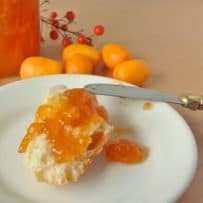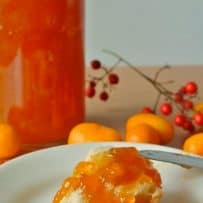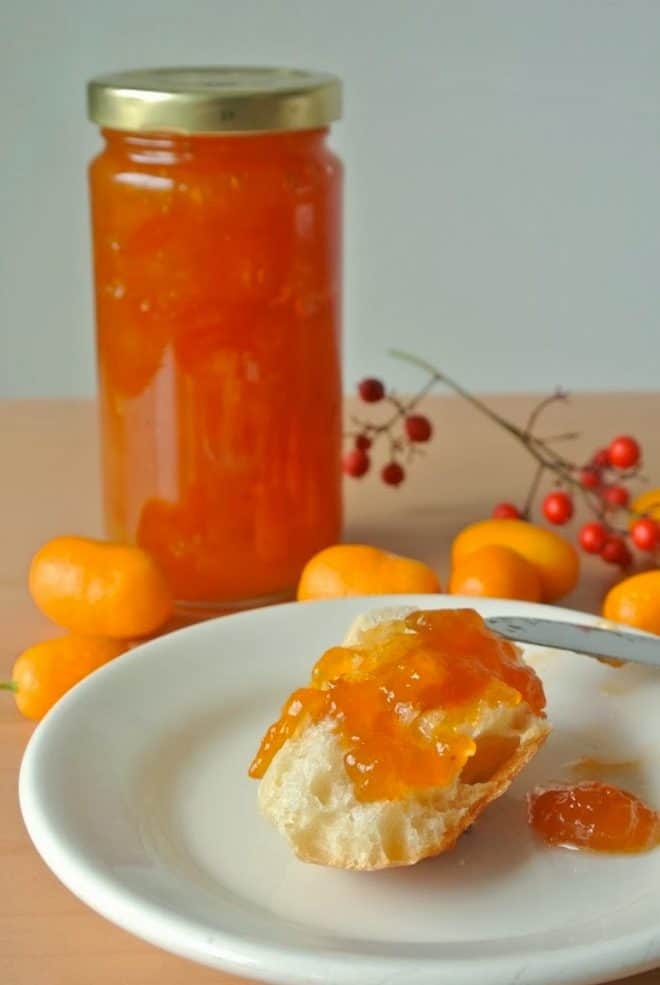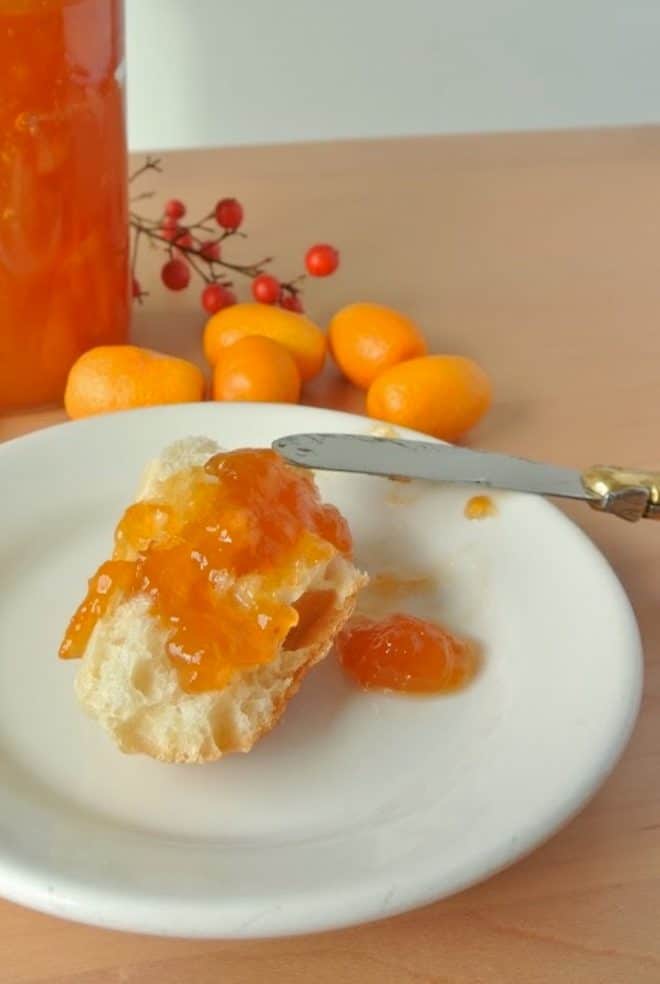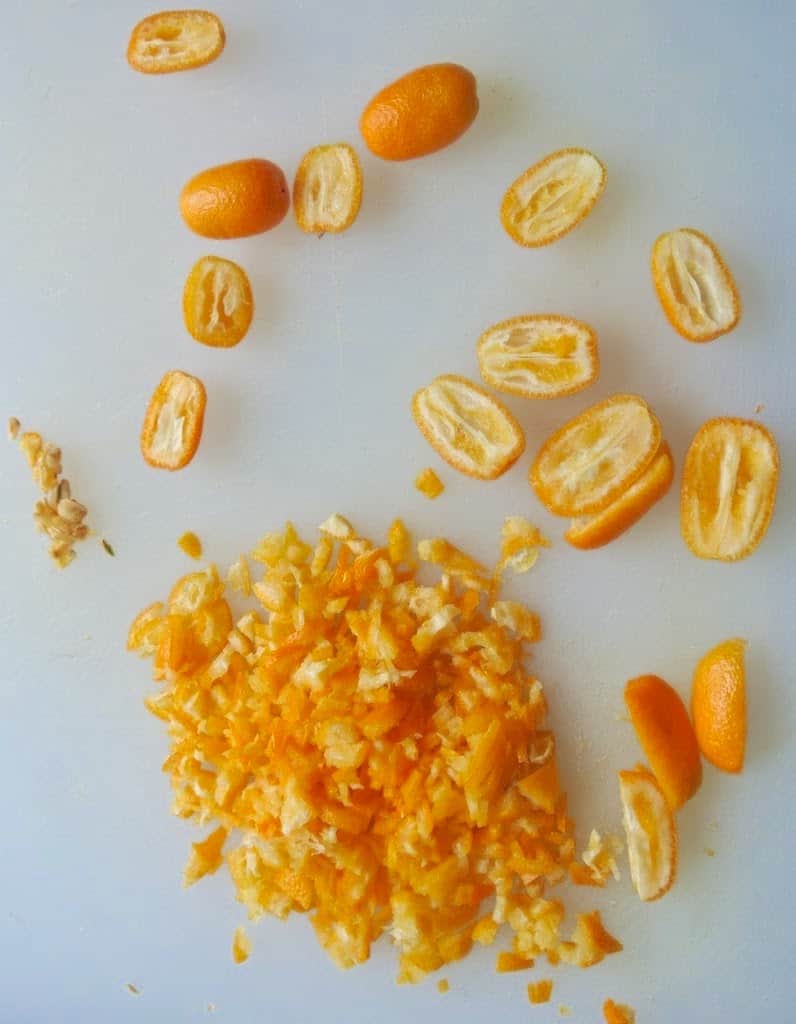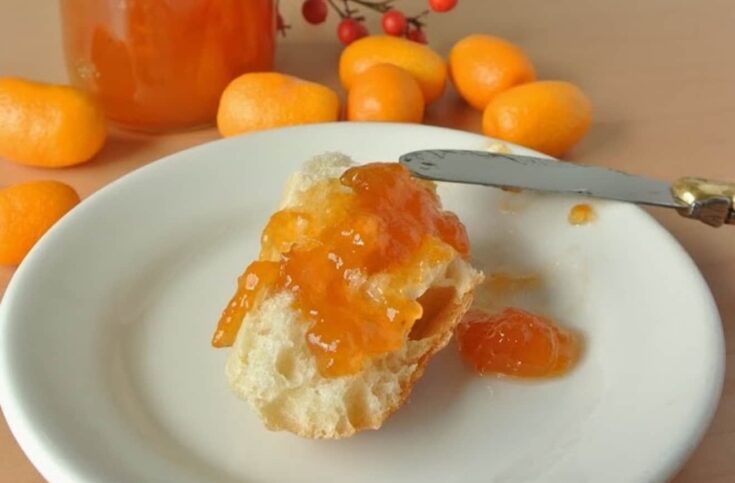What are kumquats?
Kumquats look like mini oranges with an interesting name that is Chinese for small citrus orange. Native to South Asia and the Asia-Pacific, there are 3 varieties of the fruit, in this recipe I’m using the oval. They also come in round and the Jiangsu variety which can be round or bell shaped.
What is the difference between marmalade and jam?
Marmalade is a preserve that is made with citrus fruit including the peel making it typically chunkier. Jam (or jelly) is made with the pulp and juice of other fruits. In the process of making this marmalade, I couldn’t help think about spreading it on a lovely warm scone with clotted cream, think I might have to make some. When it comes to chopping the kumquats, I found that if you cut them lengthwise you can see the seeds and remove them easier. If you find when you cut them, that the white pith inside looks really dry, remove it. To save yourself from chopping madness, I found that putting the halves in the food processor and pulsing makes for a much quicker process than trying to finely chop by hand. This is also helps release some of the juices and oils from the zest. Chefs Tips
Canning/preserving kumquat marmalade
Per the USDA, jars do not need to be sterilized prior to using a water canning bath if being boiled for 10 minutes or longer, which applies in this case. This canning method is for a simple water bath. Make sure you are using proper canning jars (the ones in my pictures are just for the photos and not for canning/preserving). Place a round wire rack in the bottom of a deep pan (or canning pot). You must elevate the jars off the bottom of the pan to prevent them from breaking. Fill the pan with water (it should cover the jars by 1 to 2 inches). Bring the water to a boil, use tongs to carefully add the filled and sealed jars, cover with a lid and boil for 10 minutes. Remove the jars carefully.
- If you don’t have a candy thermometer, place a small plate in the freezer for an hour before you start. To test if the marmalade is ready, drop a little onto the plate and if it gels, it’s ready.
** To sterilize the jars, wash with warm soapy water and rinse well. Arrange the jars and lids onto a baking sheet and leave in a preheated, 175 degree F/80 degree C oven for 25 minutes. Or, boil the jars and lids in large saucepan of boiling water for 15 minutes. Allow to dry completely.

